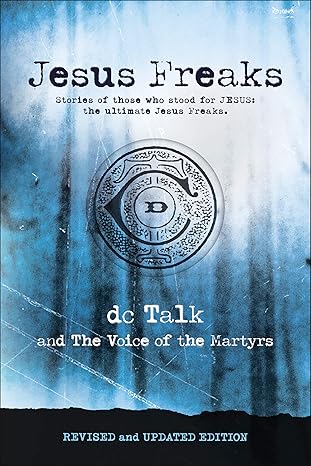
Archaeology of the Bible Book Review: Faith Meets Facts in Isbouts' Masterwork
Tuesday, October 25, 2016Ever wonder if there's actual proof behind those Sunday school stories? You know, the ones where skeptical friends raise their eyebrows when you mention walls falling down in Jericho or Moses parting the Red Sea? Jean-Pierre Isbouts' Archaeology of the Bible might just become your new favorite conversation starter. This isn't your typical dusty academic tome—it's more like having a brilliant archaeologist friend walk you through museum exhibits, pointing out the fascinating discoveries while explaining why they matter for your faith. I'll be honest: when I first picked up this book, I wasn't sure whether it would strengthen my faith or complicate it. Spoiler alert: it did both, and that's exactly why it's so valuable.
About the Book and Author
Meet Your Archaeological Tour Guide
Jean-Pierre Isbouts is essentially the kind of professor you wish you'd had in college—the one who makes ancient history feel like an adventure movie. He's not just some ivory tower academic; this man has worked with National Geographic and possesses a remarkable knack for transforming mind-numbing historical details into genuinely engaging narratives. Think of him as the David Attenborough of biblical archaeology—he can make you care about pottery shards and ancient cooking methods (trust me, it's more fascinating than it sounds).
What You're Getting Into
Picture this: you're embarking on a chronological road trip through the Bible, but instead of just reading the stories, you're actually seeing the places, touching the artifacts, and understanding what daily life was like for Abraham, David, and Jesus. That's essentially what this book accomplishes. Isbouts guides you through biblical history from Genesis to Revelation, using authentic archaeological finds to paint a vivid picture of each era. It's like having GPS coordinates for your faith—you're not just believing the stories; you're seeing where they actually happened and how they fit into the broader historical landscape.
The Good: Where This Book Really Shines
It's a Feast for Your Eyes (and Brain)
Let me just say this upfront: this book is gorgeous—coffee-table-book gorgeous. The photographs aren't merely pretty pictures; they're windows into biblical times. When Isbouts discusses the pool of Bethesda where Jesus healed the paralyzed man, you're not just reading about it—you're looking at the actual archaeological remains. It's like Instagram for Bible history, except everything actually happened.
The maps and timelines are a godsend too (pun intended). You know that feeling when you're reading about all those "-ite" peoples in the Old Testament and your eyes start glazing over? These visual guides make it all click into place. Suddenly, you understand why the Israelites had such persistent conflicts with the Philistines—they were literally next-door neighbors with vastly different worldviews.
Smart Stuff Made Simple (But Not Dumbed Down)
Here's what I genuinely appreciate about Isbouts: he doesn't talk down to you, but he also doesn't assume you have a PhD in ancient Near Eastern studies. When he discusses controversial topics—such as whether there's archaeological evidence for the Exodus—he presents different scholarly viewpoints without making you feel like you need to pick sides in some academic food fight. It's refreshing to encounter a scholar who can say, "Here's what we know, here's what we're still figuring out, and here's why it all matters."
His section on the Dead Sea Scrolls is particularly brilliant. Instead of drowning you in manuscript details, he helps you understand why these discoveries were such a significant find for Bible-believing Christians. It's like finding your grandmother's diary and discovering that the family stories you grew up with were not only true but even more remarkable than you thought.
Making Ancient Times Feel Real
You know how sometimes biblical characters feel almost mythical, as if they existed in some fairy tale dimension? Isbouts fixes that perception entirely. When you read about Jesus teaching by the Sea of Galilee, you'll actually understand what that shoreline looked like, what the fishing boats were like, and how the acoustics worked for speaking to crowds. It's the difference between watching a movie and visiting the actual film set—suddenly everything becomes tangible and real.
The Not-So-Good: A Few Things to Consider
It's a Commitment (In the Best Way)
Let's be honest: this isn't beach reading. If you're looking for something to flip through during commercial breaks, this isn't your book. It's more like a graduate-level course that happens to be exceptionally well-written. Some evenings, I found myself re-reading the same section—not because it was confusing, but because there was so much valuable information I didn't want to miss anything.
Don't Expect Warm Fuzzies
If you're hoping for devotional insights or "what this means for your life today" applications, you'll be disappointed. Isbouts remains firmly in historian mode throughout. It's like having a remarkably knowledgeable museum guide who sticks to the facts rather than a pastor who draws spiritual lessons. This isn't necessarily problematic—it's simply different from what many Christian readers might expect. Think of it as the "vegetables" of biblical study—incredibly nutritious for your faith, even if it's not always comfort food.
Who Should Add This to Their Library?
This book is perfect for you if you're:
- The type of person who loves watching History Channel documentaries about biblical times
- A Christian who's tired of having to choose between faith and facts
- Someone studying theology or leading Bible studies who wants solid historical background
- That friend who always asks thoughtful questions in Sunday school and genuinely wants substantive answers
- Anyone who appreciates books with more photographs than a typical novel (seriously, the visuals are outstanding)
My Bottom Line: Worth Every Penny
Here's my honest assessment: Archaeology of the Bible won't make you more spiritual in the warm-and-fuzzy sense, but it will make your faith more grounded. It's like the difference between believing your spouse loves you because they say so versus seeing all the thoughtful things they do behind the scenes—both are valid, but one provides a deeper appreciation for the entire relationship.
Isbouts has accomplished something remarkable here. Instead of treating archaeology and faith as if they're locked in a boxing match, he demonstrates how they can dance together beautifully. The archaeological evidence doesn't "prove" the Bible in some courtroom sense, but it does provide an incredibly rich historical context that makes the biblical narratives come alive in ways I never expected.
If you're someone who's ever felt like you had to check your brain at the church door, this book is for you. It serves as a powerful reminder that faith and scholarship aren't enemies—they're more like dance partners who can create something beautiful together.
More Books
Comments



